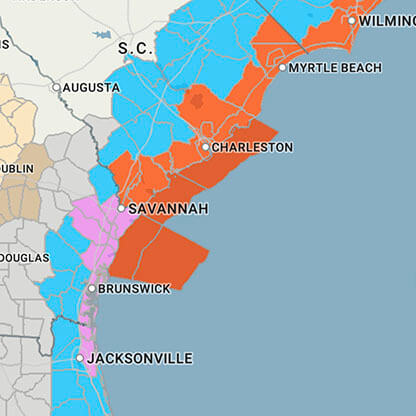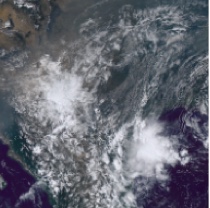
Areas of heavy, thundery rain may lead to disruption to transport and travel from late Friday through much of Saturday What to expect: Flooding of homes and businesses could happen quickly, with damage to some buildings from floodwater, lightning strikes, hail or strong winds Fast flowing or deep floodwater is possible, causing a danger to life Where flooding or lightning strikes occur, there is a chance of delays and some cancellations to train and bus services Spray and sudden flooding could lead to difficult driving conditions and some road closures Some communities might become cut off if roads flood Power cuts might occur and other services to some homes and businesses could be lost Further details: Thundery rain will reach the south of the warning area later Friday before spreading north to affect much of England through Saturday. Rain will likely be locally torrential, bringing 20-30 mm in less than an hour in many places, with 60-90 mm in less than three hours possible in a few places. Whilst rain will clear from the south of the area by early Saturday afternoon, further thunderstorms are likely to develop here. As well as heavy rain, impacts from frequent lightning, gusty winds and large hail are also likely. What Should I Do? Consider if your location is at risk of flash flooding. If so, consider preparing a flood plan and an emergency flood kit. Prepare to protect your property and people from injury. Before gusty winds arrive, check to ensure moveable objects or temporary structures are well secured. Items include; bins, garden furniture, trampolines, tents, gazebos, sheds, and fences. Give yourself the best chance of avoiding delays by checking road conditions if driving, or bus and train timetables, amending your travel plans if necessary. People cope better with power cuts when they have prepared for them in advance. It’s easy to do; consider gathering torches and batteries, a mobile phone power pack and other essential items. If you find yourself outside and hear thunder, protect yourself by finding a safe enclosed shelter (such as a car). Do not shelter under or near trees, or other structures which may be struck by lightning. If you are on an elevated area move to lower ground. Be prepared for weather warnings to change quickly: when a weather warning is issued, the Met Office recommends staying up to date with the weather forecast in your area.












